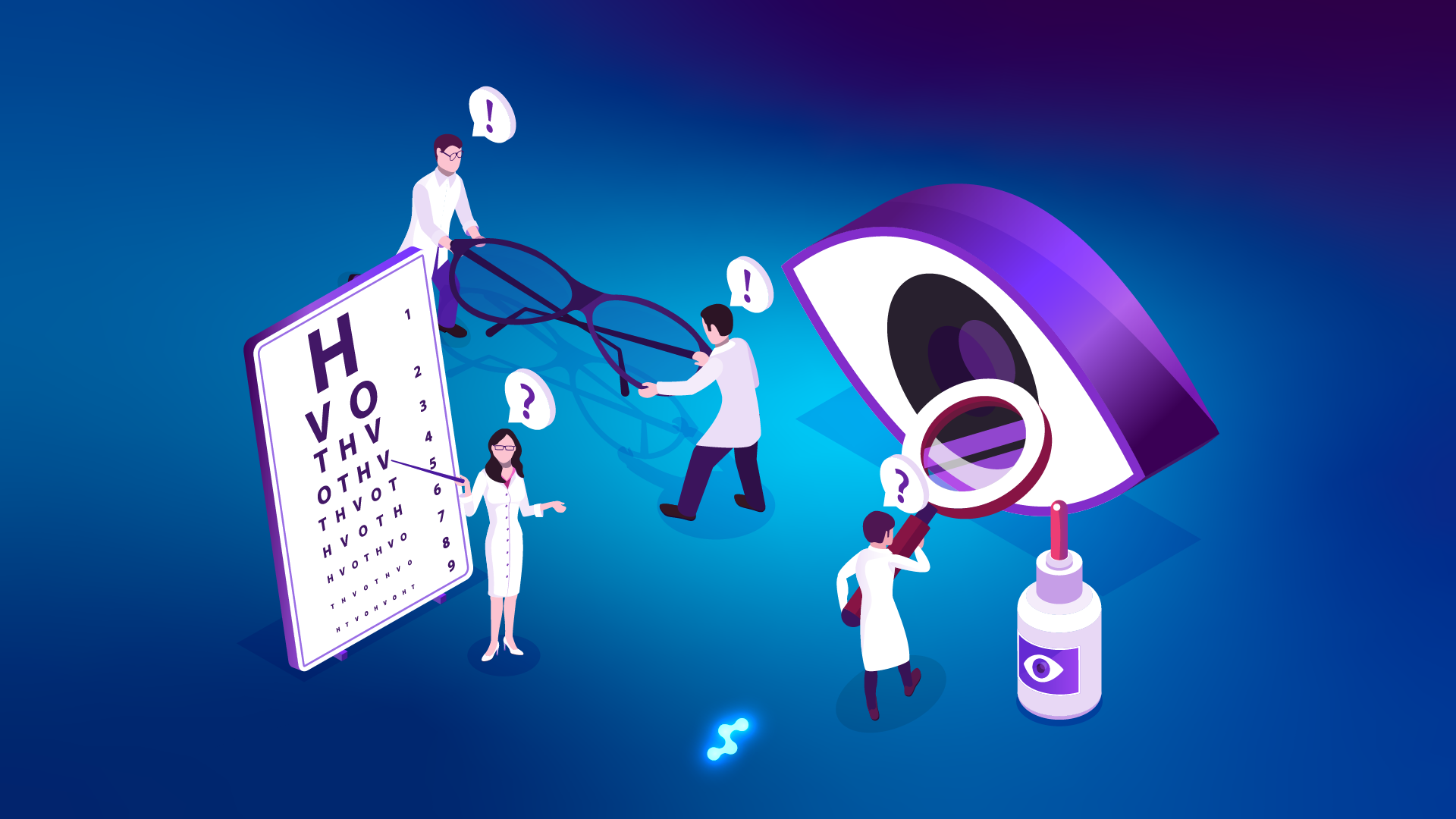Eyes and Ears: The Growing Synergy Between Audiology and Optical Practices
How Combining Vision and Hearing Services is Shaping the Future of Patient Care
The integration of audiology into optical practices is a growing trend that is reshaping how sensory healthcare is delivered. For opticians, eye doctors, optometrists, and eyewear store owners, offering both vision and hearing services under one roof presents a unique opportunity to enhance patient care while driving business growth. By addressing two essential senses—sight and hearing—you can meet the needs of your existing customer base in a more comprehensive way, all while increasing revenue through effective cross-selling.

1. The Logical Fit Between Audiology and Optometry
Optometry and audiology are inherently complementary disciplines. Both focus on sensory health, and patients often experience issues with both sight and hearing as they age. According to studies, individuals over 50 are significantly more likely to require both vision correction and hearing support. This overlap creates a synergy for practices looking to expand their services.
For patients, the convenience of addressing multiple healthcare needs in a single visit is invaluable. Instead of juggling appointments at different locations, they can receive comprehensive care in one place. This holistic approach not only saves time but also fosters trust in your practice as a one-stop solution for sensory health.
Additionally, there is a growing awareness among healthcare providers that sensory impairments often go hand-in-hand. For example, research has shown that untreated hearing loss can exacerbate cognitive decline—a condition that may also impact visual processing. By addressing both senses simultaneously, practices can play a vital role in improving overall patient wellness.
2. Cross-Selling Opportunities: Expanding Services for the Same Customer Base
One of the most compelling business advantages of integrating audiology into an optical practice is the ability to cross-sell services to your existing customer base. Many of your current patients—particularly older adults—are already potential candidates for hearing care. By offering audiology services, you’re not targeting an entirely new demographic; instead, you’re meeting more of your current customers’ needs.
Why It Works
- Shared Demographics: The majority of optical patients are also likely to benefit from hearing care services, particularly those over 50 who are prone to both vision and hearing decline. This demographic often prioritizes convenience when seeking healthcare solutions.
- Convenience: Patients appreciate being able to address multiple health concerns in one location, making them more likely to choose your practice over competitors that only offer one service.
Boosting Revenue
- Higher Average Spend Per Customer: Hearing aids, hearing tests, and related products are high-margin offerings that can significantly increase the average revenue per patient. For example, while prescription glasses or contact lenses typically generate steady income, hearing aids can add thousands of pounds or dollars per transaction.
- Repeat Visits: Audiology services often require follow-ups for adjustments or maintenance, bringing customers back into your store more frequently. This provides additional opportunities for eyewear sales or upgrades.
By integrating audiology into your practice, you create a win-win scenario: patients receive comprehensive care tailored to their sensory health needs, and your business benefits from increased revenue streams without needing to attract an entirely new customer base.
3. Patient Convenience and Satisfaction
In today’s fast-paced world, convenience is a top priority for patients. Offering both vision and hearing services under one roof eliminates the hassle of scheduling separate appointments at different locations. This streamlined experience not only saves time but also enhances patient satisfaction.
Moreover, patients value continuity in their healthcare providers. When they trust you with their vision care, they’re more likely to entrust you with their hearing health as well. This dual-service model strengthens patient loyalty and positions your practice as a leader in sensory healthcare.
For example:
- A patient visiting for an annual eye exam may discover during their visit that they qualify for a free hearing screening.
- Similarly, patients purchasing new glasses may be introduced to hearing aid options tailored to their lifestyle needs (e.g., discreet designs or Bluetooth-enabled devices).
This integrated approach fosters long-term relationships with patients by showing them that your practice is invested in their overall well-being—not just their eyesight.
4. Business Opportunities for Optical Practices
Adding audiology services isn’t just about improving patient care—it’s also a strategic move for growing your business. Here’s how it can benefit your practice:
Diversified Revenue Streams
Hearing aids are high-margin products that complement optical offerings like glasses and contact lenses. By expanding into audiology, you open up new income opportunities without needing to attract an entirely new customer base. For example:
- A patient who spends £200 on prescription glasses may also spend £2,000 or more on premium hearing aids during the same visit.
- Additional services like earwax removal or tinnitus management consultations can further boost revenue while addressing common patient concerns.
Competitive Advantage
As larger chains like Specsavers have already demonstrated, combining audiology with optometry gives practices a competitive edge by offering comprehensive sensory care. Independent practices can adopt this model to differentiate themselves from competitors who focus solely on vision care.
Increased Foot Traffic
Patients visiting for audiology services may also explore your eyewear offerings during their visit—leading to additional sales opportunities. For example:
A patient coming in for a hearing aid fitting may decide to purchase sunglasses or upgrade their prescription lenses during the same appointment.

5. Trends Driving Integration
Several factors are fueling the integration of audiology into optical practices:
Aging Populations
As life expectancy increases across Europe and North America, so does the demand for both vision and hearing care among older adults. This demographic represents a significant portion of healthcare spending—and practices that cater to their dual needs are well-positioned for growth.
Technological Advancements
Modern hearing aids are smaller, more discreet, and often integrate with smartphones—making them more appealing to consumers. Features like Bluetooth connectivity allow users to stream music or phone calls directly through their devices—a functionality that resonates with tech-savvy patients.
Consumer Expectations
Patients increasingly seek convenience in healthcare. Practices that offer multiple services under one roof are better positioned to meet these expectations while building stronger relationships with their customers.
In countries like the UK, this model is already well-established—with approximately 19% of optical clinics now offering audiology services. In contrast:
- Spain faces challenges due to limited reimbursement options for adult hearing aids.
- Canada experiences provincial disparities in audiology regulations that slow adoption but present untapped potential for forward-thinking practices.
6. Challenges and Considerations
While the benefits of integrating audiology into optical practices are clear, there are some challenges to consider:
- Recruiting Qualified Audiologists: Finding experienced professionals to deliver high-quality hearing care is essential for success.
- Equipment Costs: Investing in audiology equipment such as soundproof booths or diagnostic tools requires upfront capital.
- Workflow Management: Balancing two disciplines within one practice can be complex without proper planning and staff training.
However, these challenges can be mitigated with careful preparation:
- Partnering with reputable suppliers can help reduce equipment costs.
- Cross-training existing staff ensures smooth operations without overwhelming your team.
- Leveraging technology like integrated practice management systems simplifies scheduling and billing across both disciplines.
7. The Future of Sensory Clinics
The integration of vision and hearing care represents the future of sensory healthcare—a model that aligns perfectly with modern patient expectations for convenience and comprehensive service delivery.
As technology continues to advance:
- Smart glasses with built-in hearing aids could revolutionize how sensory needs are addressed.
- Tele-audiology could make it easier to provide remote consultations for patients in rural areas—expanding access while reducing operational costs.
By adopting this dual-service approach now, optical practices can position themselves as leaders in this emerging trend while setting the stage for long-term growth.
8. Conclusion
Integrating audiology into optical practices is more than just a trend—it’s a strategic opportunity to enhance patient care while boosting business growth. By addressing both vision and hearing needs under one roof, you create a seamless experience that appeals to today’s busy patients while tapping into new revenue streams through effective cross-selling.
For opticians, eye doctors, optometrists, and eyewear store owners looking to stay ahead in an increasingly competitive market, this approach offers a clear path forward—one that benefits both your patients and your bottom line.For more insights into optimizing your practice management system or exploring innovative solutions tailored for eye care professionals, visit Glasson.app
 English
English  Čeština
Čeština  Deutsch
Deutsch  Español
Español  Français
Français  Hrvatski
Hrvatski  Italiano
Italiano  Lietuviškai
Lietuviškai  Português
Português  Română
Română  Türkçe
Türkçe  Nederlands
Nederlands  Magyar
Magyar  Slovenčina
Slovenčina  Svenska
Svenska  Ελληνικά
Ελληνικά  Русский
Русский  Polski
Polski 










